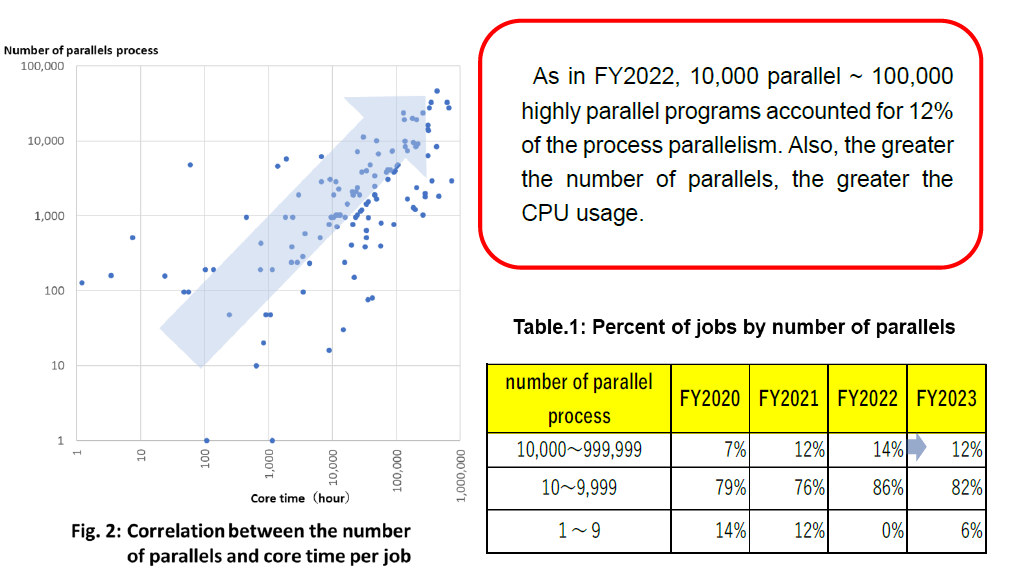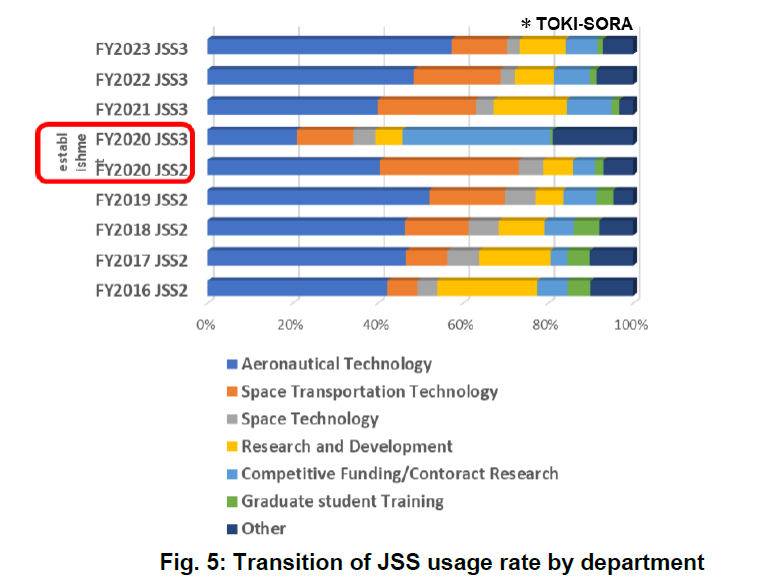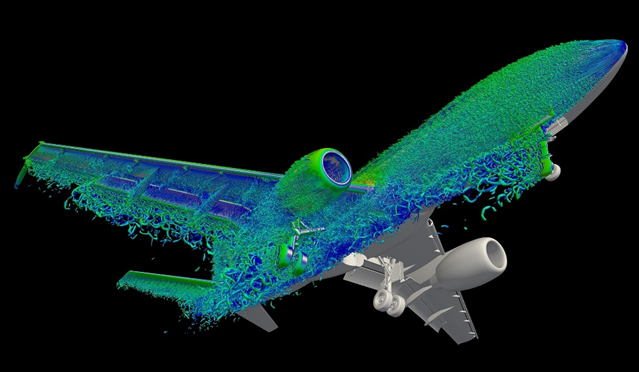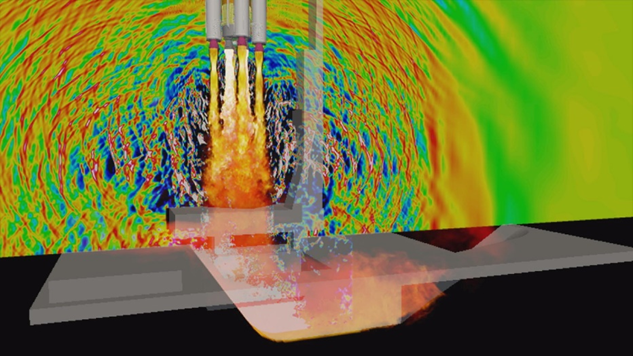Usage summary of JSS in FY2023
JAXA Supercomputer System Annual Report February 2023-January 2024
■ Operation of JSS3: December 1, 2020~
* For specifications of JSS3, refer to Supplement 1.
Job filling rate trends

Usage trends of JSS3

JSS usage trends
Trends of JSS usage frame
The fields of use are classified into five frameworks, and utilization rate guarantees and job execution priority control suitable for each framework are set, effectively maximizing R&D results.

FY2023 results by usage framework

Trend of usage for Specified Project Use

For the first time, FY2021 exceeded the rule of ” Specified Project Use ratio of 50% or less” that was started in FY2016 to prevent general usage from being overwhelmed. In FY2023, Specified Project Use of utilization rate more than 50% have been able to effectively control by fine-grained job execution priority.

Trends in JSS Usage by Department
The trend continues to be that the top three sectors, aviation technology, space transportation technology, and research and development, account for more than 80%.

JSS usage results by subject in FY2023
The top 20 issues account for 62% of the total. In addition, the H3 rocket project accounts for about 13% of the total.

Estimation of JSS usage cost in FY2023
The estimated JSS usage cost is a virtual cost that expresses the amount of usage using the node usage unit price.
By sector, the two sectors, 57% for the technical aviation sector and 13% for the space technology transportation sector, accounted for 70%. By business, Aeronautical Science and Technology Research [Aviation System Research U] ①Advanced research is account for about 30%.

Visualization technology
Visualization technology is an essential tool for analyzing computational results as quickly and accurately as possible. In the Supercomputer Utilization Division, we provide various visualization application tools (such as FieldView, ParaView, and Tecplot) on JSS3/TOKI-RURI, and researchers can choose the visualization technology that is practical for their simulation results.
●Large-scale visualization
When the size of the computational results exceeds a certain threshold and cannot be visualized using standard visualization environments, the visualization team provides an appropriate method. Some examples of complex large-scale visualization are shown in the figure below.
 Fig.8: Core technology to innovate
Fig.8: Core technology to innovate
aircraft design and operation
 Fig.9: Aero-acoustic simulation of H3
Fig.9: Aero-acoustic simulation of H3
launch vehicle at lift off
● New Visualization Technologies
We are promoting the use of new visualization technologies, and the 3Dvisualization technique utilizing 3D printers allows for the physical representation of numerical simulation results. This enables intuitive understanding of complex flow shapes that were previously difficult to grasp.
 Fig.10: 3D printer model with
Fig.10: 3D printer model with
transparent resin (Flow field
around the landing gear)
 Fig.11: 3D printer model with transparent resin
Fig.11: 3D printer model with transparent resin(Numerical simulation of buffet)
● Visualization display using 3D devices
Visualization technology using MR (Mixed Reality) enables the display of numerical simulation results as 3D holograms on special devices, allowing multiple researchers to simultaneously view the same computational results from different locations. This technology is not only effective for verifying computational results but also serves as a useful tool for confirming 3D designs of aircraft and spacecraft. We aim to establish a method for displaying work results on devices as simply as possible.
 Fig.12: Display of 3D simulation result using HoloLens2
Fig.12: Display of 3D simulation result using HoloLens2
(Simulation of two wind turbines)
We are also exploring visualization technology using VR (Virtual Reality). Since VR is more popular than MR, many researchers are likely to be familiar with using these devices, so we have verified 3D image output from visualization applications like ParaView. However, there is a problem to be solved in connecting the device to a supercomputer service, so this technology is still in the future. We can provide individual consultation.

Supplement 1: Specification overview of JSS3

Supplement 2: JSS3 Facility Utilization service fee

JAXA Supercomputer System Annual Report February 2023-January 2024


